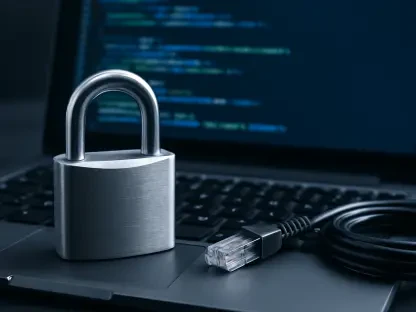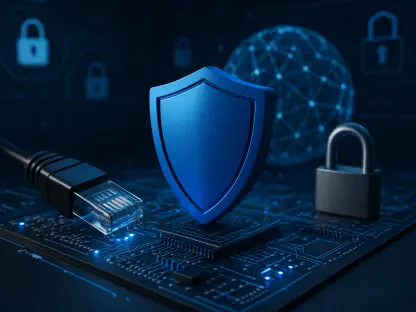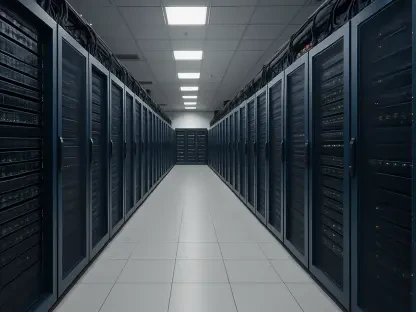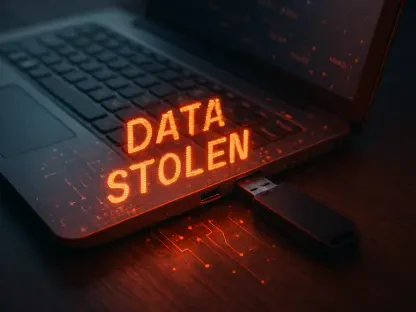Imagine a world where the backbone of modern technology—semiconductors—becomes a battleground for betrayal, with billions of dollars in innovation hanging in the balance, and the global leader, Taiwan Semiconductor Manufacturing Co (TSMC), finds itself at the center of a crisis. Recently, TSMC uncovered suspicious activity within its ranks, leading to legal action against employees accused of trade secret theft. This incident has sent shockwaves through the tech industry, raising urgent questions about how companies can protect their intellectual property in an era of relentless competition. This roundup gathers perspectives, strategies, and lessons from various industry voices to explore the depth of this crisis and uncover actionable solutions for safeguarding innovation.
Unpacking the Crisis: Perspectives on TSMC’s Battle
The Incident and Initial Reactions
TSMC’s discovery of unauthorized network activity during routine checks has spotlighted the vulnerability even industry titans face. Reports indicate that an internal investigation swiftly followed, culminating in lawsuits against an undisclosed number of employees. Industry observers note that TSMC’s immediate response reflects a growing trend of zero-tolerance policies, emphasizing the high stakes of protecting proprietary data in semiconductor manufacturing, where a single breach could derail years of research.
Many analysts commend TSMC for its decisive action, viewing it as a signal to both employees and competitors that intellectual property breaches will face severe consequences. However, some express concern over the lack of transparency regarding the specifics of the theft, such as whether data was shared externally. This opacity, they argue, could either protect ongoing investigations or risk undermining stakeholder trust in the company’s crisis management.
Broader Implications for the Tech Sector
Beyond TSMC, the tech industry at large grapples with similar threats, as evidenced by parallel cases at companies like Apple and Google, where lawsuits have targeted individuals for leaking sensitive designs. Commentators across the sector highlight that trade secret theft often results in substantial financial losses and stalled innovation pipelines. These incidents underscore a shared anxiety: no company, regardless of size, is immune to internal or external espionage.
Differing opinions emerge on the root causes, with some industry watchers pointing to insider threats as the most pressing danger due to employees’ access to critical systems. Others argue that external actors, often backed by sophisticated hacking tools, pose an equal if not greater risk in regions with intense tech rivalries. This split in focus reveals a complex challenge that demands multifaceted defenses.
Industry Voices on Trade Secret Theft Challenges
Evolving Threats and Vulnerabilities
Insights from cybersecurity professionals reveal that trade secret theft tactics have grown increasingly sophisticated, with insiders sometimes using encrypted channels to siphon data undetected. External threats, meanwhile, often exploit supply chain weaknesses, targeting third-party vendors with less robust security. These evolving methods, according to tech risk assessors, expose gaps in even the most advanced protective measures.
Regional dynamics also play a significant role, as noted by global market analysts who point to heightened espionage risks in areas with dense tech hubs. The interconnected nature of supply chains further amplifies vulnerabilities, making it difficult to isolate breaches to a single entity. This perspective suggests that collaborative, cross-border efforts may be essential to mitigate such widespread risks.
A contrasting view from organizational behavior specialists emphasizes internal culture over technological fixes. They argue that fostering loyalty and ethical standards among employees could deter misconduct more effectively than firewalls alone. This angle challenges companies to rethink how they balance security investments with efforts to build trust within their teams.
Legal Strategies as Deterrence
Legal experts weigh in on TSMC’s proactive litigation, viewing it as part of a broader industry shift toward using lawsuits as both punishment and warning. Comparing TSMC’s approach to similar actions by Apple and Google, many note that high-profile cases often aim to set precedents that discourage future breaches. Yet, skepticism persists about whether legal recourse truly prevents theft or merely addresses damage after it occurs.
Some corporate governance advisors suggest that litigation should be paired with preventive policies, such as stricter background checks during hiring. They argue that identifying potential risks before employees gain access to sensitive data could reduce reliance on after-the-fact lawsuits. This proactive stance contrasts with more reactive legal strategies, sparking debate over the best path forward.
An additional layer of insight comes from intellectual property lawyers who advocate for enhanced data encryption and access controls as complementary tools to legal action. Their reasoning centers on minimizing the opportunity for theft in the first place, thereby reducing the burden on judicial systems. This blend of technology and law offers a hybrid model that many believe could redefine industry standards.
Best Practices and Tips from the Field
Strengthening Internal Defenses
Cybersecurity consultants stress the importance of continuous monitoring systems, similar to those that flagged TSMC’s breach, as a cornerstone of modern defense. They recommend real-time anomaly detection tools to catch suspicious activity early, preventing small leaks from escalating into major crises. Such technology, they argue, should be a non-negotiable investment for any tech firm handling high-value data.
Another tip from risk management specialists focuses on employee training programs that emphasize the consequences of intellectual property theft. By regularly educating staff on ethical conduct and the legal ramifications of breaches, companies can cultivate a culture of accountability. This approach differs from purely technical solutions, offering a human-centered layer of protection.
A third perspective, shared by operational leaders, highlights the need for segmented data access within organizations. Limiting employee exposure to only the information necessary for their roles can significantly reduce the scope of potential leaks. This structural change, while logistically complex, is seen as a practical step to fortify internal security.
Building Collaborative Industry Responses
Policy advocates within the tech sector propose greater collaboration among companies to combat trade secret theft collectively. Sharing anonymized data on breach patterns and tactics could help firms anticipate and counter threats before they materialize. This cooperative model stands in contrast to the traditionally competitive nature of the industry, presenting a novel way to address a shared problem.
On a different note, international regulatory experts call for harmonized global standards on intellectual property protection. They argue that inconsistent laws across countries create loopholes exploited by bad actors, particularly in cross-border espionage cases. Aligning legal frameworks, they believe, could create a unified front against theft on a worldwide scale.
Supply chain security consultants add another dimension by urging firms to audit third-party partners rigorously. Ensuring that vendors adhere to the same stringent standards as primary companies can close gaps often targeted by external threats. This emphasis on external relationships provides a broader lens through which to view the protection of sensitive information.
Reflecting on Shared Lessons and Next Steps
Looking back, the discourse surrounding TSMC’s legal battle illuminated a universal truth: trade secret theft remains a pervasive threat that no tech giant can ignore. The varied opinions—from cybersecurity tactics to cultural reforms—highlighted the complexity of safeguarding innovation in a fiercely competitive landscape. Each perspective contributed to a richer understanding of both the challenges and potential solutions.
Moving forward, companies are encouraged to adopt a layered approach, integrating advanced monitoring tools with robust employee policies to preempt breaches. Exploring industry-wide alliances to share threat intelligence emerged as a promising avenue to bolster collective defenses. Additionally, advocating for stronger, unified international regulations offered hope for closing systemic gaps that thieves exploit.
As the tech world continues to evolve, investing in research into emerging theft tactics becomes imperative to stay ahead of perpetrators. Firms also need to prioritize transparency in crisis communication, balancing confidentiality with the need to maintain stakeholder trust. These steps, rooted in the lessons from TSMC’s struggle, pave the way for a more secure future in an industry defined by its ideas.









